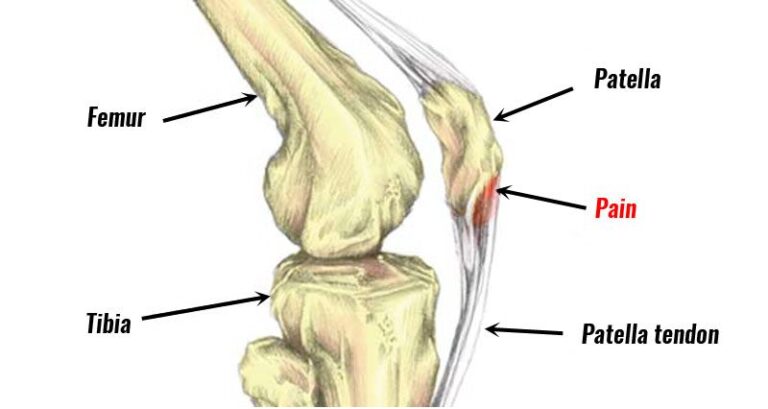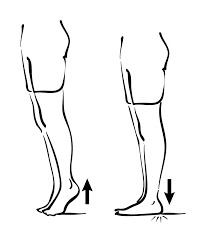How to Cure Plantar Fasciitis in One Week
Table of Contents
What is a Plantar Fasciitis?
The pain and inflammation of your foot’s plantar fascia is called as plantar fasciitis. It is the common reason why people have heel discomfort.
The strong, fibrous plantar fascia connects your heel to the ball of your foot and toes, much like a ligament. Like a strong elastic band, it is elastic. Your foot’s arch is created by the plantar fascia, which connects the surrounding bones.
Overstretching or overworking your plantar fascia can lead to plantar fasciitis. Any injury might result in swelling of the plantar fascia. It is painful to walk and use your foot because of this inflammation. While plantar fasciitis often affects one foot at a time, it can affect both feet simultaneously.
You should see a physician if you have been dealing with foot or heel discomfort for longer than a week.
If you’re looking to heal plantar fasciitis quickly — ideally within a week — you’ll need a focused and consistent approach.
How to Cure Plantar Fasciitis?
The ball of your foot or heel hurts all the time if you have plantar fasciitis. This is because, despite the fact that it may seem like inflammation, a degenerative condition affects the tissue that connects your toes to your heel bone. Plantar fasciitis is also more common in people who run a lot, have high arches or flat feet, are overweight, or spend a lot of time on their feet.
It could take six to twelve months for your foot to heal. You can do the following at home to ease the pain and speed up the healing process:
Rest:
It’s important to keep your foot off of all weight until the inflammation goes down.
Ice
Ice can be applied in a variety of ways to reduce inflammation. It’s an easy way. To make an ice pack, first wrap a towel around a bowl of frozen corn or peas or a plastic bag filled with crushed ice. Then, for 15 to 20 minutes, apply it on your heel three or four times a day. As an alternative, immerse your heel in a shallow pan filled with ice and water for ten to fifteen minutes several times a day. Always keep your feet out of the water.
Stretching and Exercise:
Flex your calves, Achilles tendon, and soles of your feet. Engage in exercises that will help your lower leg and foot muscles get stronger. This can lessen pain, support your ankle, and stop plantar fasciitis from coming back.
Towel Scrunches:
Lay a towel flat on the ground and scrunch it up towards you with your toes. Every day, repeat for one to two minutes.
Sports Tape:
By supporting your foot with tape, you can avoid movements that worsen plantar fasciitis.
Inserts for shoes:
They can provide you with additional cushioning and support and are also known as orthotics, insoles, or arch supports. When choosing one, a firmer one is better; make sure it has enough arch support.
Heel Foot Cups:
Every step you take puts pressure on your plantar fascia as your heel hits the ground. The heel-shaped cushioning in your shoes might help. Even though they usually don’t work as well as inserts, they are nevertheless an affordable option to try.
Night Splints:
Because most people sleep with their feet pointed down, the Achilles tendon and plantar fascia are shortened. Your feet will remain at a 90-degree angle if you use night splints while you sleep. Therefore, you get a healthy, continuous stretch as you sleep instead of shortening your plantar fascia.
Foot Massage:
As a quick and easy way to ease pain and suffering during the day, have a mobility ball, golf ball, or tennis ball in your desk, desk drawer, or purse. Take a little break from standing to roll the ball under your foot while applying continuous pressure, or use the ball while seated at your computer. Avoid “hot areas” that hurt.
Press solidly on the sore spot for a few seconds before rolling the ball, being careful not to cause abrupt or severe discomfort. In addition to increasing blood flow to the arch and heel and dissolving painful adhesions (tears that were improperly repaired) on the plantar fascia ligament, the pressure of the massage blocks the brain’s pain receptors.
For extra relief and a calming cold therapy, put the ball in the freezer first thing in the morning.
Although there is a wealth of personal experience supporting the efficacy of massage, more thorough research is required. A number of smaller studies, including one published in the Journal of Acupuncture and Meridian Studies, have found that self-massage dramatically lowers pain.
Wrap a bottle of water around your feet:
A bottle of water is probably on your bedside, in the kitchen, or on your work desk. This simple remedy can help you properly manage plantar fasciitis. Just take a seat in a chair, roll a water bottle ten times between your heel and your foot, and then switch sides. The ball stretch is comparable to this. Press down repeatedly, but never until you get discomfort. For extra relief and healing, freeze it first!
The RICE Approach:
When the pain first appears, it is important to rest the damaged foot. A popular first aid technique for foot injuries is RICE:
- R: Rest for a few days in the sore area.
- I: Apply ice to the area for 20 minutes at a time to minimize swelling.
- C: To reduce swelling, gently wrap the affected area.
- E: To raise the region, place a couple of pillows beneath the foot.
Temporary Supportive Taping
Kinesiology tape or sports tape can provide the foot more support, reducing the amount of tension on the plantar fascia. You can learn how to use it properly from a qualified practitioner, such as a physiotherapist.
Anti-Inflammatory Medications
Ibuprofen and other NSAIDs (nonsteroidal anti-inflammatory drugs) can be helpful for a brief period of time.
- Reduce pain
- Control inflammation
Before beginning any medicine, always get medical advice, especially if you have underlying medical issues.
Should I See a Doctor If I Have Plantar Fasciitis?
A podiatrist can determine your foot type, recommend appropriate shoes, and offer advice on how to avoid discomfort. To help relieve tension, a tight calf muscle and fascia can be stretched.
Conclusion
It’s not possible to “cure” plantar fasciitis in a week. However, you can gain significant pain relief and establish the foundation for recovery within that timeframe by putting into practice an active, comprehensive approach focusing on rest, ice, stretching, support, and inflammation management.
To ensure a long-lasting recovery, be careful during these seven days, pay attention to your body, and be ready to continue supporting measures in the next weeks and months.
FAQs
What is the fastest cure for plantar fasciitis?
Although there isn’t a single “fastest cure,” plantar fasciitis pain can be reduced and healing accelerated with a combination of rest, ice, stretching, and possibly orthotics. More advanced therapies like shockwave therapy or steroid injections might be taken into consideration for cases that don’t go away.
How can plantar fasciitis be cured permanently?
A comprehensive approach is required to perhaps permanently eliminate plantar fasciitis, including rest, activity moderation, stretching, and supportive footwear. More sophisticated therapies, such as physical therapy, orthotics, or even injections, may be required in some situations.
Can plantar fasciitis be healed in a week?
Lastly, to relieve pressure on your heel, put on a supportive shoe or insert. Plantar fasciitis should go away in one to two weeks with a little patience and care. However, make sure to see your doctor for additional assessment if the pain worsens or doesn’t go away after two weeks.
Can walking reduce plantar fasciitis?
Plantar fasciitis causes severe pain when you first start walking in the morning. Walking around could make the discomfort go away, but if you’re off your feet for a long time, the stabbing sensation might come back.
How to heal plantar fasciitis naturally?
Using light massage techniques, you can alleviate plantar fasciitis-related foot pain. Working from the balls of your feet toward the heel, apply firm but gentle pressure with your thumbs to your heels and the arches of your feet. Another way to massage the sore spot is to roll a tennis or golf ball beneath your feet.





